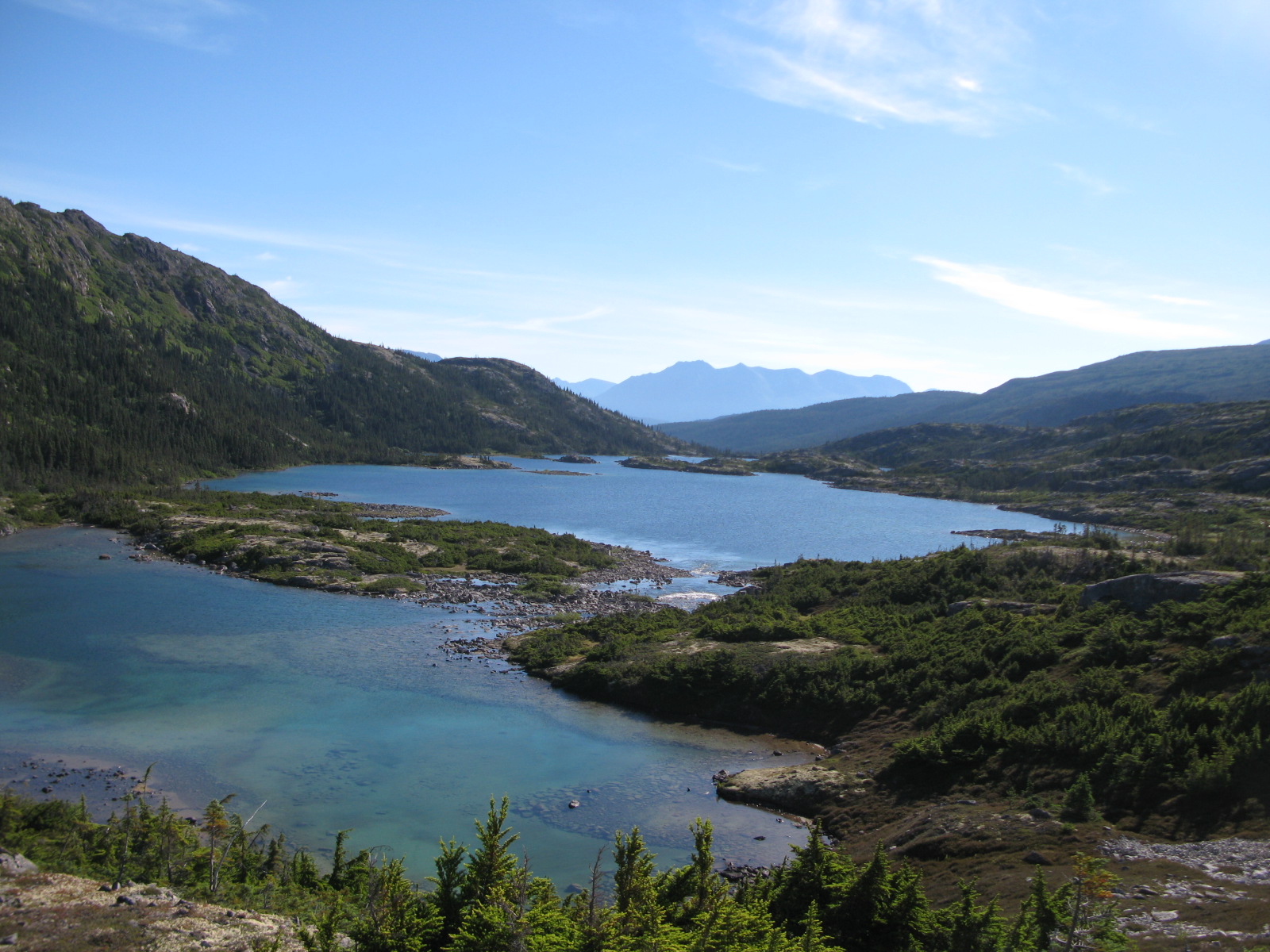
Deep Lake
Follow in the footsteps of thousands of prospective gold miners between the long-abandoned towns of Dyea in Alaska and Bennett in Canada’s Yukon, crossing the international border at dramatic Chilkoot Pass. See Walkopedia’s Chilkoot page.
Enjoy Walkopedia friend Charles Bookman’s photos (all photos by him except the historical view of the Golden Staircase!). Thank you, Charles!
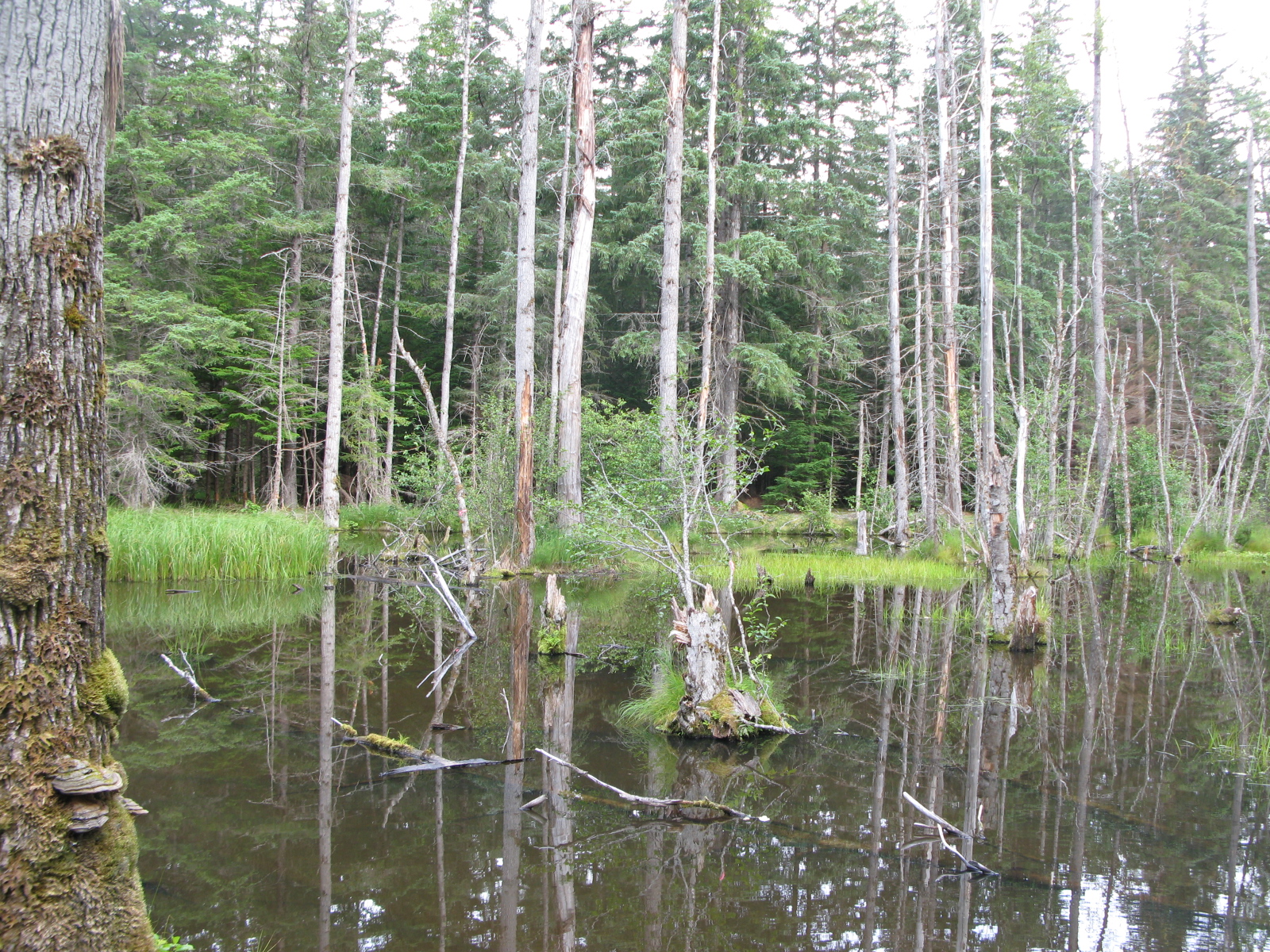
The Flats
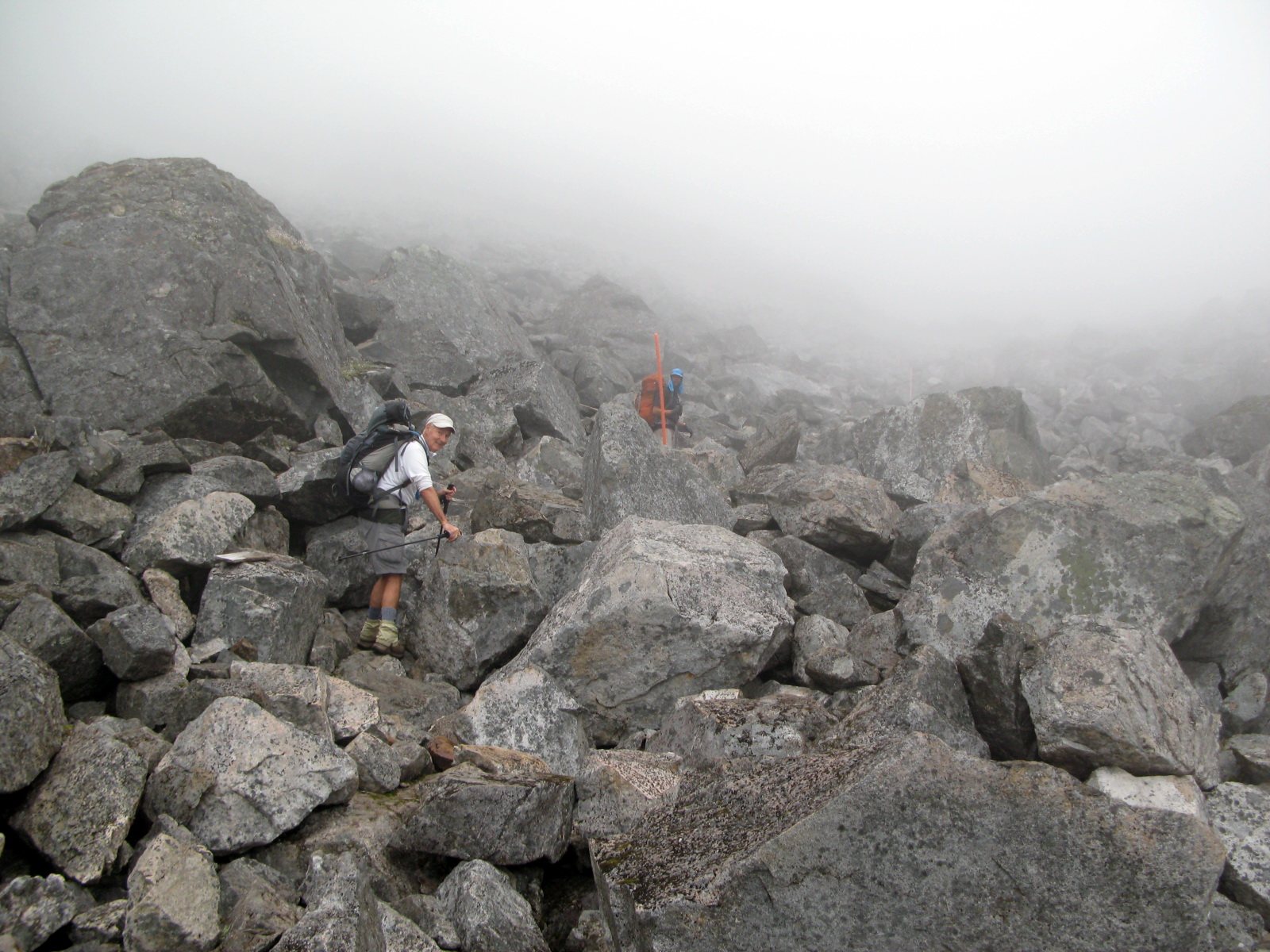
The Golden Steps
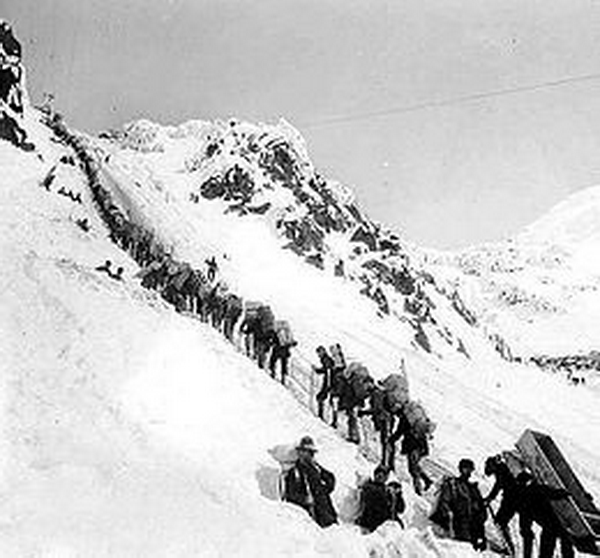
Golden Steps, Goldrush, 1898
The Chilkoot Trail begins in the ghost town of Dyea, on the coast of Alaska, and follows the first thirty three miles of the long trek into the Klondike gold fields. In the 1890s, the stampede to Klondike’s gold drew tens of thousands of men and women on the difficult journey through Alaska and into Canada, many of them taking the shortest, but hardest, route along the Chilkoot Trail. Falling into disuse following the slowdown of the Gold Rush and the construction of the narrow gauge railway directly to Whitehorse in 1900, the Chilkoot is now a national heritage trail celebrated almost as much for the enormous scale of its stunning landscapes as for its fascinating past.
Many traces of this history remain(just): once a bustling, crowded settlement at the head of a long, narrow fjord, all that now remains of the 1890s town of Dyea is a single wooden wall, and a short stretch of fence.
Making your way through damp, dripping coastal rainforest; you will cross over creeks and streams – many of the creeks are traversed by plank or rope bridges – and past burbling waterfalls. On the flat ground beside the rushing Taiya river, you can look up at a steep slab of mountainside, waterfalls trickling from a high glacier. As the river disappears into its eponymous canyon, the trail heads away and up the side of the forested valley, before joining the Taiya again at Pleasant Camp.
Chilkoot Pass has an elevation gain of nearly 800m in just over 5km, and it was at the foot of the ‘Golden Steps’ carved into its icy slopes which many would-be prospectors turned back. Faced with the daunting task of lugging a ton of goods up the incline they abandoned their belongings, leaving one of the richest sites for artefacts on the trail.There is now no ice staircase or overhead tramway, only a lonely tramp over the rocky, freezing summit. Conditions are often bad, and low-lying cloud can make for an eerie backdrop, leaving walkers with the impression that they are perched on a desolate precipice.
Happy Camp, named for the relief of prospectors as they arrived, is reached after a trek through the exposed alpine landscape beyond Chilkoot Pass, and sits between scattered lakes. Further on, as trees begin to fill the scenery once more, the climatic difference on the Canadian side becomes more noticeable – forests of dry pine dominate, rather than the lush, temperate rainforest previously seen.
From Happy Camp, walkers can take a more leisurely pace again. Beautiful lakes are dotted alongside the trail all the way to Lake Bennett; Lake Lindeman in particular is worth taking some time to explore, with its splendid turquoise waters and historical associations (fleets of boats, many built by amateurs, were launched from its shores). The campgrounds at Deep Lake and Bare Loon Lake are particularly scenic – some of the most beautiful spots on the trail – whilst the camp at Lindeman is overflowing with fascinating traces of the prospectors. At Bennett, the trail comes to an end and hikers can meet trains.
This is a very tough walk in high, remote mountains, on which you will have to be self-sufficient and where there are numerous dangers. Weather is extreme and unpredictable; avalanches are possible, and a significant risk especially early in the season. Bears wander the trails. Come prepared.
See Walkopedia’s Chilkoot page.
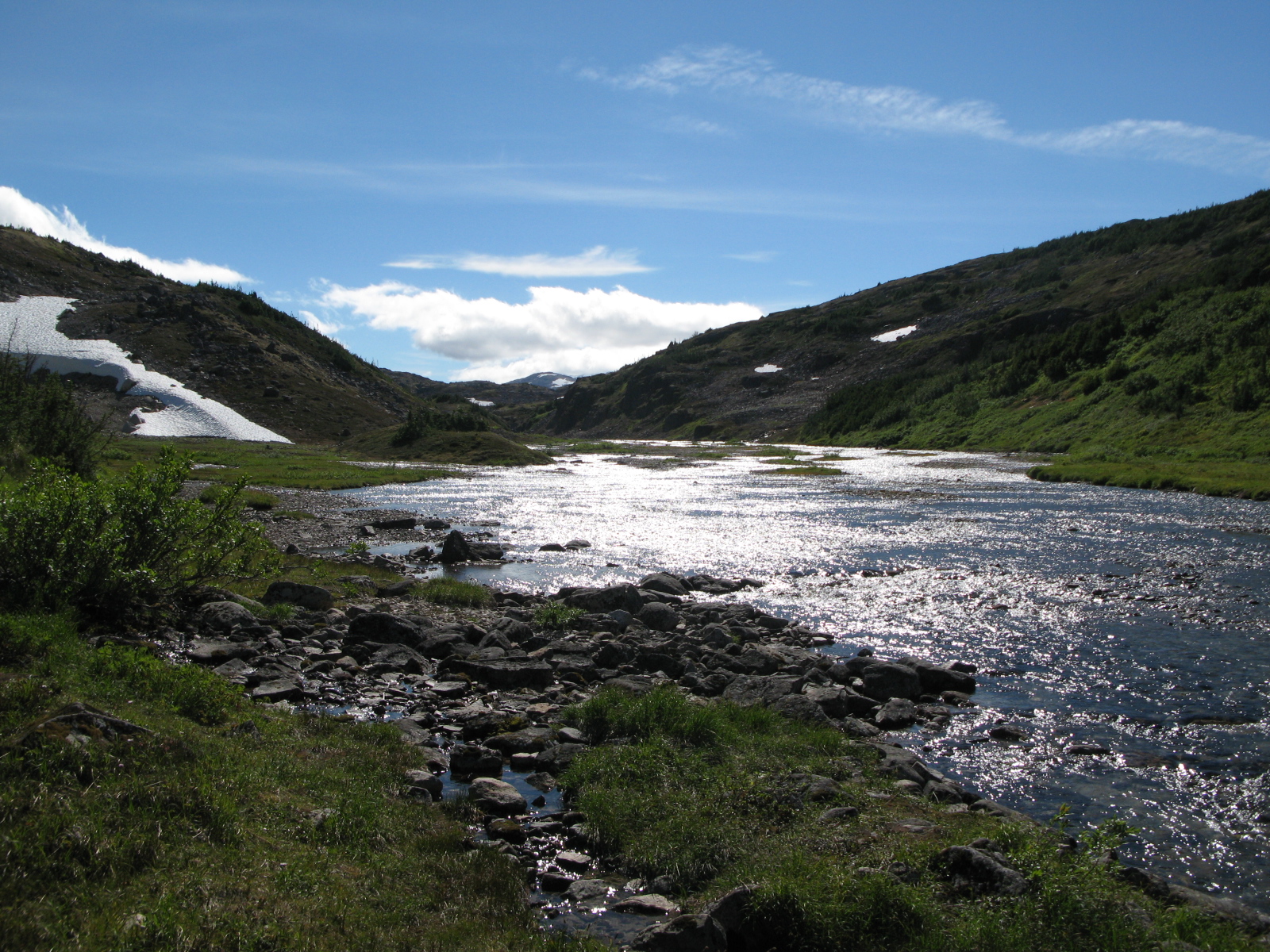
Scenery at Happy Camp
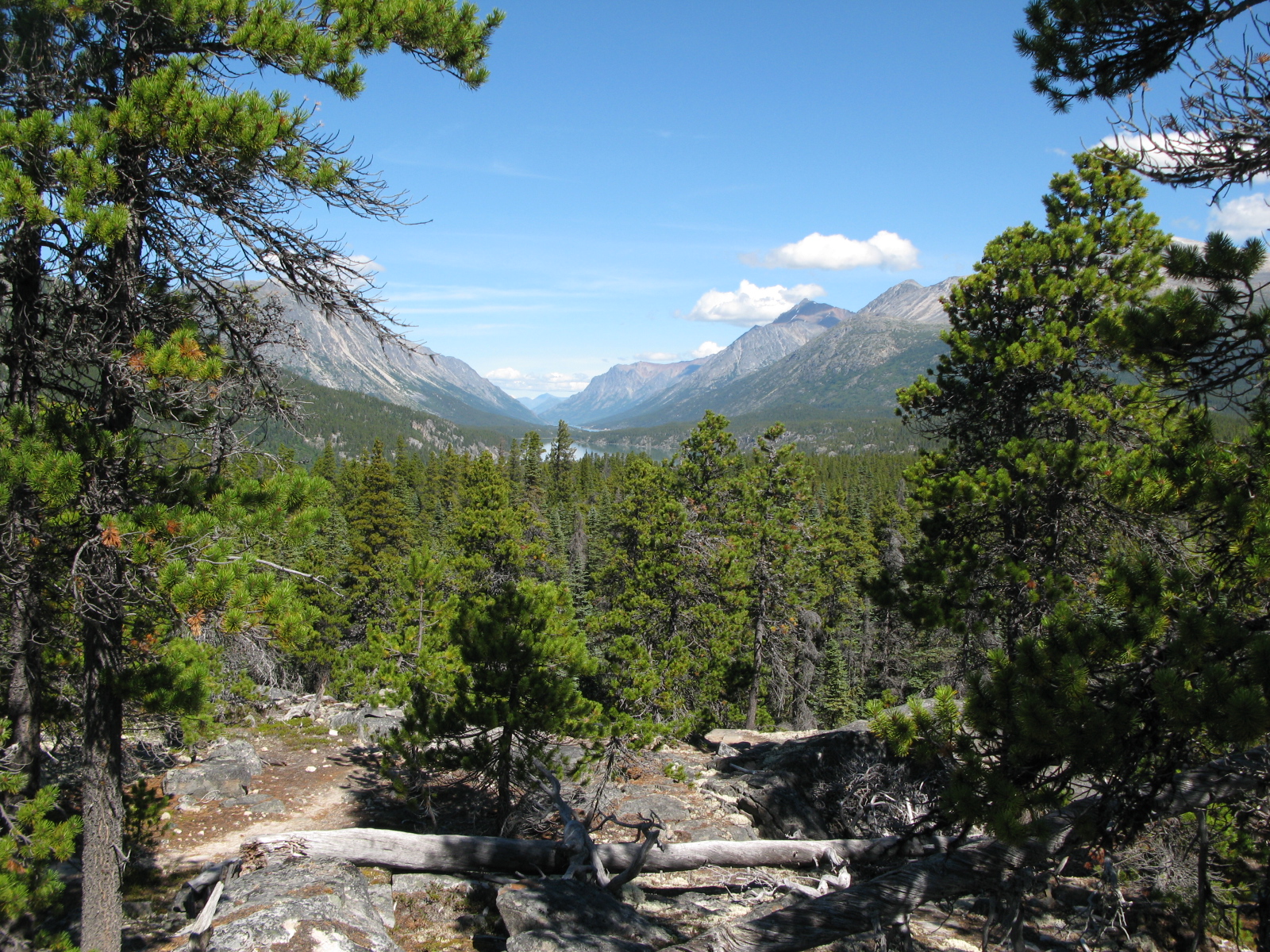
Graveyard above Lindeman Lake
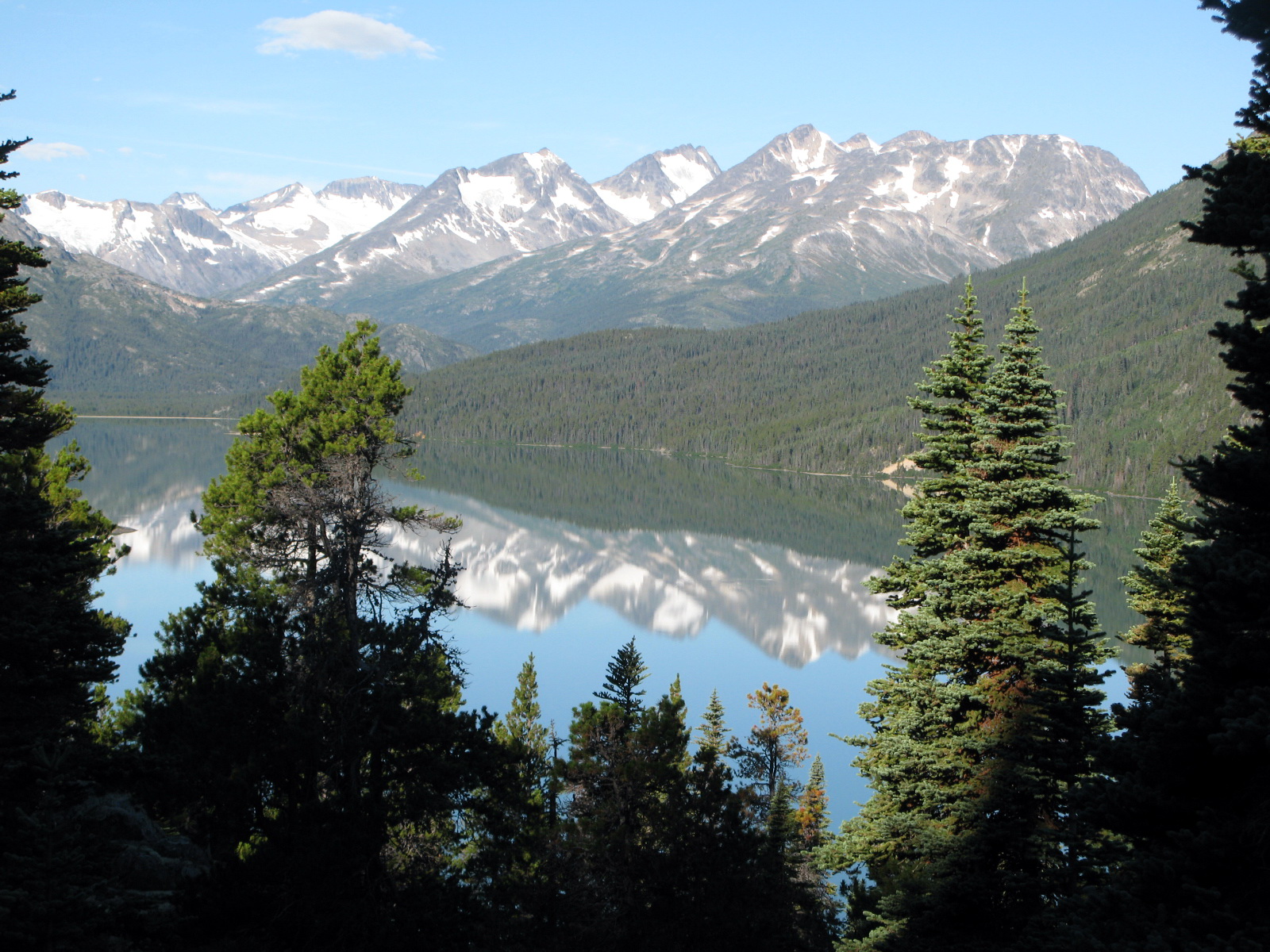
Reflection on Lindeman Lake
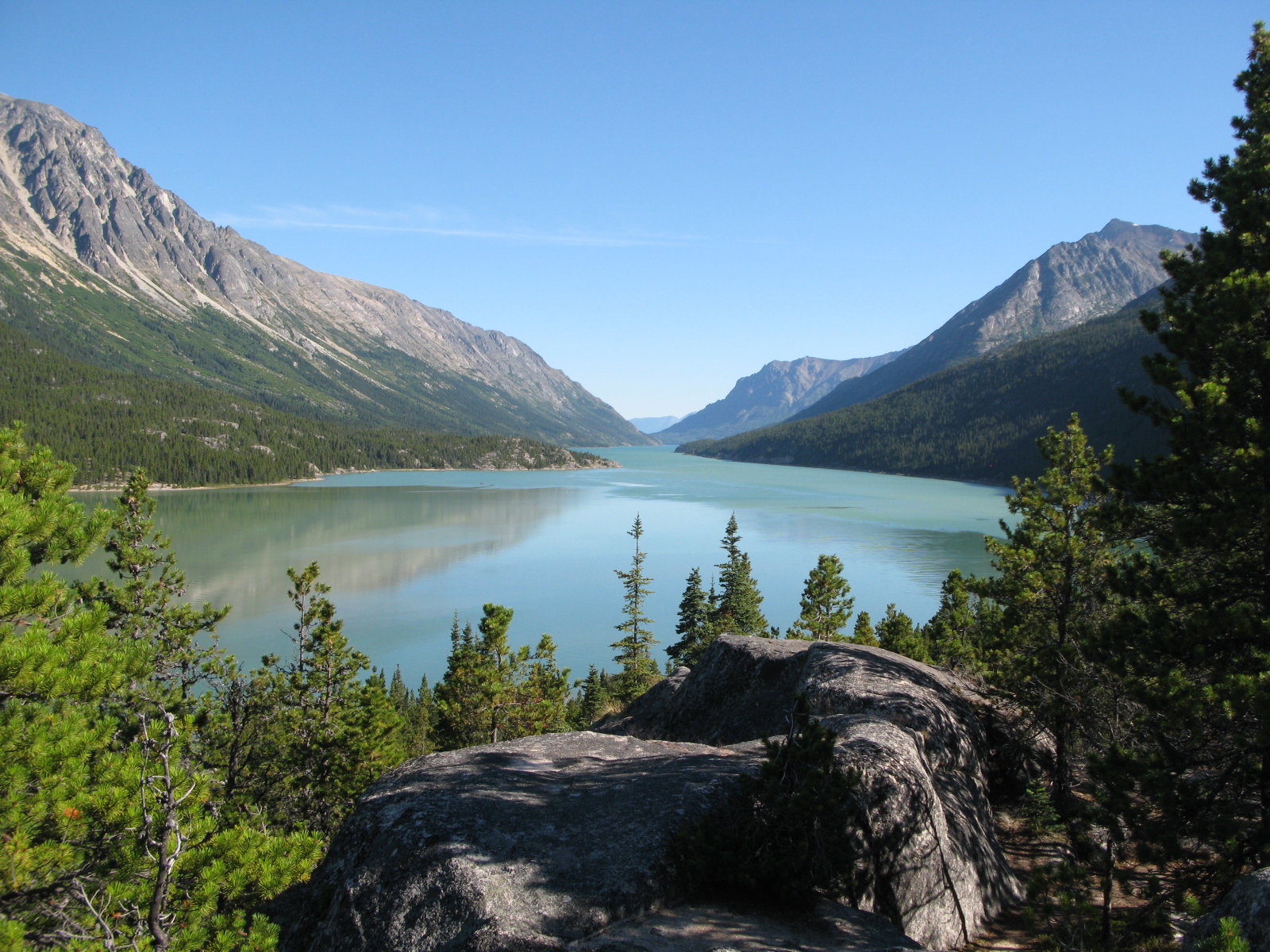
Bennett Lake
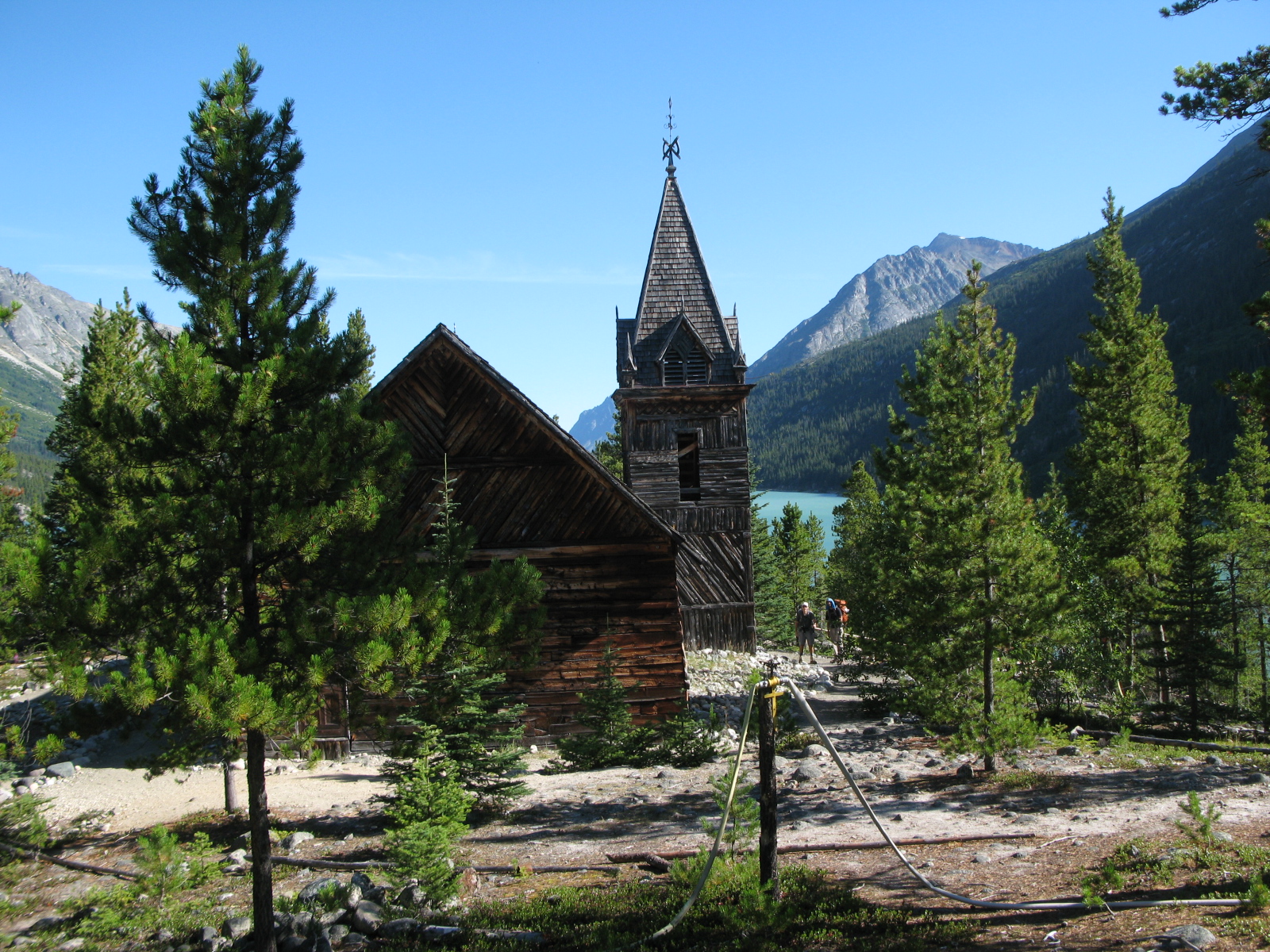
Church at Bennett Lake